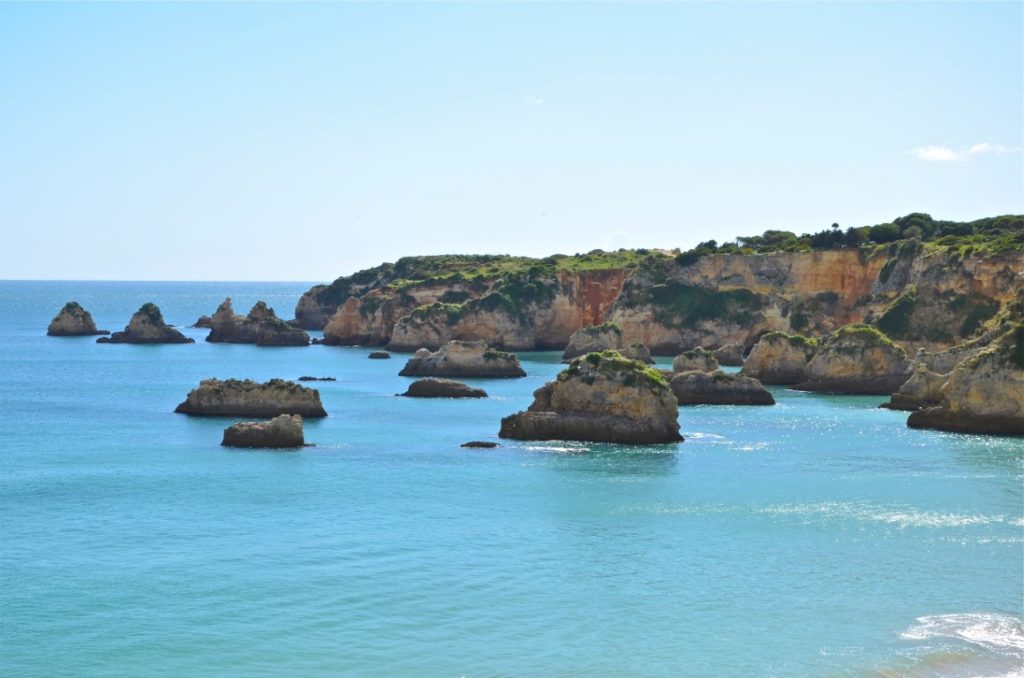was recently issued to Environmental Impact Statement (DIA) referring to the “Allotment Operation of the Traditional Hospitality UP3 of Portimão” which, by that name, will not say much to many people.
If we talk about the tourist project that threatened the so-called “last window to the sea”, in João d'Arens, the number of people who heard about it will be substantially higher.
This project mobilized and polarized a good part of the regional public opinion, given that it is one of the last relatively free areas on the stretch of coast where the Municipality of Portimão is located.
In this context, many arguments were put forward, between those who defended the project's lead, because they understood that this area should not be consigned to the densification of the coastal building, and those who defended the project's implementation, because they believed that the increase of this same coastal building it will bring economic benefits to the place and to the region itself.
In between, many non-arguments were also launched for discussion, from both sides, taking the debate more to the field of emotion than reason itself – which is also, of course, part of it.
The DIA resulted, however, unfavorable, something that was more or less predictable if the law was complied with, as there was an allocation of nuclei of algarvian linaria, a plant species protected by Annex II of the Habitats Directive.
However, it is interesting to verify that the DIA based its foundation on something more than a species (as important as it may be), a legal aspect (always decisive) or an administrative rule. It could be said that, not stopping at the tree, he glanced at the forest.
Thus, a factor repeatedly mentioned in the Environmental Impact Statement is the landscape.
Sometimes for the scenic and framing value, but mainly as an element of synthesis of a set of values (vegetation, geology, hydrogeology, culture, among others) that would be significantly affected by the implementation of the project, identified by the exercise of landscape deconstruction in its different “layers” which is promoted by the Environmental Impact Study.
However, and even if mechanically dissected into its different components, the concept of landscape always contains a dose of subjectivity, deeply associated with the human dimension and the emotional charge it carries, even more so when qualitative conclusions result from it, as is the case.
But this is not precisely what we have witnessed over the years, when endless tourist promoters proposed – being authorized – to alter and reinvent (tropicalizing, concrete, whatever) so many areas of the Algarve coastline, for them not recognize any value in the state they were in?
In addition to the technical dimension of decisions in Environmental Impact Assessment processes, there is always another, of a political nature. Politics, it cannot be stressed enough, understood as the management of public affairs, and not as a hostage of party structures.
In this field, this decision joins another, relatively recent, in December last year, issued in relation to a tourist allotment in a context analogous to the present, but on the cliffs of Benagil and Marinha.
There, the “non-integration in the pattern of land use and the relevant increase in human pressure on this important and sensitive coastal stretch” was decisive, the depletion of the “carrying capacity of the beaches, given the current demand patterns” and the “important negative impacts arising from the strong visual intrusion that the development would cause in one of the areas of the Algarve that preserves the original features of the regional coastal landscape, whose artificialization does not seem justified and whose preservation is imposed" in view of the current "environmental and climatic requirements".
After so many years orphaned from the landscape in the eyes of the entities managing these processes, is it that the Algarve begins to have the right to the protection of its landscape matrices?
A political affirmation of landscape as an operative concept of management, as more than mere scenery, will be underway (finally, more than a decade after the national ratification of the European Landscape Convention!) because in the field of scenic preferences, in fact coconut trees and palm trees compete on an equal footing with cork oaks and holm oaks, depending only on the taste of each one – and what resource to preserve?
Will the balance of spatial planning in the Algarve begin to have two plates?
Author Gonçalo Gomes is a landscape architect, president of the Algarve Regional Section of the Portuguese Association of Landscape Architects (APAP).
(and writes according to the old Spelling Agreement)



















Comments